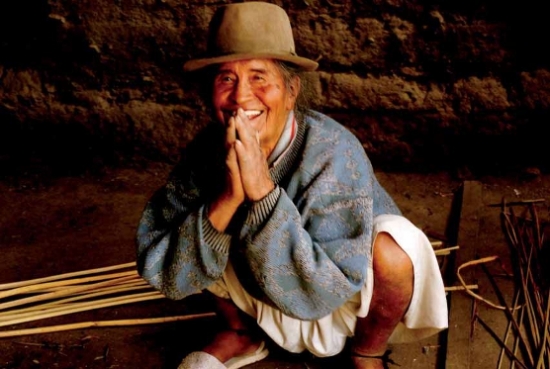
Ecuador and the Galapagos had always sounded so exotic to me it seemed like a remote place that Marlene and I could only some day hope to visit. When we planned our trip we never thought about visiting Ecuador other than Quito, which is where all planes coming from outside the country land. We learned Ecuador has lots more to offer than the Galapagos and we found the jungle in the Amazon basin region even more exciting and exotic than the offshore islands.
Flights from the US come into Quito in the middle of the night. It gets cold at night due to the 9500-foot altitude but during the day the temperatures don't vary too much above 20C because of its proximity to the Equator. As you leave the airport an employee along with a policeman checks all tags on the luggage to ensure they belong to the person carrying them. This was consistent throughout the country and we experienced it in airports large and small. From this I could only deduce that there must have been a lot of luggage theft in the past.
Quito is a large city, some 34 km in length, but not very wide, nestled in a valley. The city of 2.1 million sits in a valley with a branch of the Andes mountains to the west so you always know in which direction your traveling. Quito didn't look much different from any large city and this surprised us. I guess we expected it to look more third world and poverty stricken. We saw large hotels, many car agencies, lots of taxis and fast food restaurants. This was the first time we'd ever been at such a high altitude and found that after walking even a little near the hotel where we stayed, we were exhausted and panting heavily.
Some 25 km to the south of Quito is the center of the world and a museum is at the spot to mark the equator and show people latitude 0.00. From Quito we went to Bellavista,a cloud rain forest. We found that we quickly adjusted to the high altitudes by drinking lots of water,which did make a difference. I don't recommend to anyone suffering from heart or lung problems to try this sort of vacation.
The most exciting thing about Bellavista is the humming birds. They claim to have some 35 varieties. There are humming bird feeders all around the facilities and after the initial shock of viewing these beautiful tiny birds so close up with their wings flapping at a speed that makes them almost invisible to the eye, we grew accustomed to seeing them. Outside the room where we stayed there were at least six feeders. Another fascinating aspect of life in a cloud rain forest is the way the clouds move in to the area quickly and a haze settles over the entire region in minutes. This happens several times during the day and is quite beautiful, unique and very photographic. As a serious amateur natural photographer I was to find all of Ecuador much to my liking. We also got to see some half dozen species of butterflies on the various nature trails. I'm also glad we decided to try horse back riding in the area and see the untamed scenery from the perspective of high on a horse. It is different and challenging.
From Bellavista we went to Mindo, which is at a lower altitude and has become a tourist resort that grows from a population of 1000 to some 20,000 in the summer. While eating lunch at a local restaurant I had the feeling that it was like any sleepy South American town after watching chickens and roosters roam the main streets along with a stray dog or so. In Mindo we got to see a butterfly farm that was nice but doesn't compare to similar type facilities we've seen in Switzerland and Florida. I did enjoy getting some close-up shots of the beautiful but limited numbers of butterflies. I was disappointed because it is to Ecuador and Columbia that foreign entomologists go when they want to replenish their stock. There is also a family that is raising miniature orchids and we got to see some of these along with several other species of humming birds that live at this lower altitude. It was nice but doesn't compare to the new Utopia Park near Netanya in our own country.
Otavelo was our next stop. Here we stayed at a hacienda where Simon Bolivar slept and conducted a peace between Peru and Ecuador more than 120 years ago. Otavelo is also known for having the largest open market in all of South America every Thursday. You can see and buy anything from handmade shirts and blouses, a panama hat, to a f'ull grown pig cooking on a spit. There are also several villages in the area that specialize in textiles and leather. Our self taught guide, Luis, took us to these areas and introduced us to an indigenous man who is 72 years old, lives alone in a mud hut where he makes mats out of leaves and straw that he has gathered around the lake in the region. He is paid $1.50 a day and lives mostly on corn meal that we saw stacked in his hut, yet he seemed very happy. Luis told us an individual needs to earn at least $160 a month to survive and although the economic reform of making the local currency the US dollar has helped inflation, it hasn't been good for the indigenous peoples.
Next on our itinerary was a flight to Coca, a small oil boomtown that sits on the Napa River and is the main way station going into the Ecuadorian jungle. We were met by Xavier (pronounced Chavier) and Roberto, our indigenous guides who were to be with us just about every minute of our time spent in the Sani Lodge in the heart of the Amazon basin. We boarded a large motorized canoe that seats about 20 and spent the next two and a half hours traversing the Napa River, which is the main tributary that feeds into the Amazon. The Napa is more than two km wide in some places. However, it hadn't rained for two weeks and in places was now so shallow that the boat had to slow down to a crawl, and before entering the lagoon of the lodge we had to get out of the canoe and walk in the jungle for a half an hour before we could again board smaller canoes that took us to the lodge. Rain fell as we were walking and the guides had prepared for this by bringing rain gear for everyone.
The jungle is fascinating, frightening and difficult. You must wear knee high boots all the time because of the wetness and the boots get heavy. We were also warned not to touch the trees or lean on any growth since large ants are everywhere and a bite from any of these can cause excruciating pain for up to two hours or more. The Sani lodge is owned by a company of indigenous peoples and has been in existence some twelve years. We also had the good fortune of coming to the lodge the same time a film team had been hired to make a promotional film of tourists visiting the lodge. The two women film makers traveled everywhere with us.
Our stay at the jungle lodge was five days. During this time we must have seen at least 35 different species of birds. Every day consisted of three adventures; a morning walk of up to three hours, an afternoon trek of up to two hours that usually involved our searching for tree monkeys and other mammals and some sort of evening adventure. We also got to go Piranha fishing. Our first night we went cayman searching and saw several sets of eyes of these alligator-like reptiles in the lights of the guide from our six man canoe. The most exciting night venture was an hour walk in the jungle where we saw tarantulas more than five inches long. We saw other varieties of large spiders that were frightening looking and even grasshoppers that shocked us by their size and length of their antennae. When we were told to extinguish our flashlights and experience the jungle darkness for some five minutes, it was truly frightening. There was a distinct pulse and heaviness that we all felt with just the jungle sounds and deepest, blackest night surrounding us. After a few minutes I put my hand in front of my face and still couldn't see. There is no light for human eyes to adjust in this darkness.
Marlene and I did have the distinct pleasure of visiting the school and village where the indigenous people live where the children sang for us and we saw them working together to clear an area that would someday have a home built on it.
We all loved the jungle experience but even the youngest people in the group said this was enough and they'd never want to go into the jungle again.
Our next stop was Cotapoxi, the second highest mountain on the continent and its most active volcano. At an altitude of 14,500 feet we walked around a lake near the volcano. This was tough and really tired us. The three weeks in Ecuador were the most exciting experience of our lives and we still hadn't visited the Galapagos, our main goal, which I'll describe another time.
Captions:-
Ecuador-3: Marlene with guide, Luis, at the shuk at Otavelo Market.
Ecuador-4: An Indigenous Indian who makes $1.50 per day preparing mats.
Ecuador-5: Marlene and Motie Zaslow before going for a walk in the jungle.
Ecuador-6: The three boys are indigenous children who have cleared an area for building with their machetes.
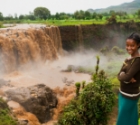 A “Virtual” tour of Ethiopia
A “Virtual” tour of Ethiopia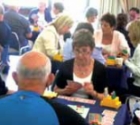 ESRA Herzliya’s Annual Bridge Morning
ESRA Herzliya’s Annual Bridge Morning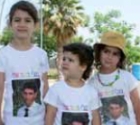 Walking for Benji
Walking for Benji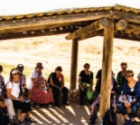 From Bible to Bedouins and Battles
From Bible to Bedouins and Battles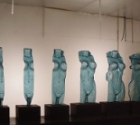 Trip to the Dead Sea
Trip to the Dead Sea Japan
Japan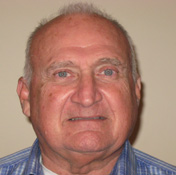 Motti Zaslow
Motti Zaslow